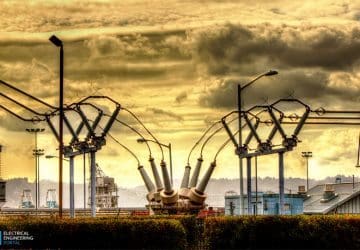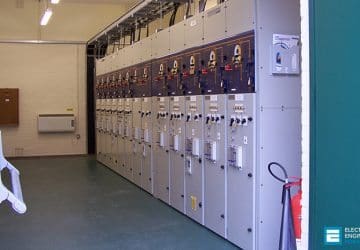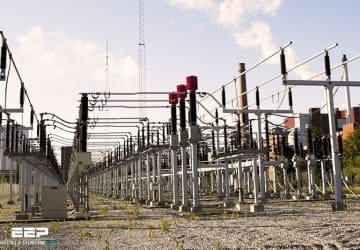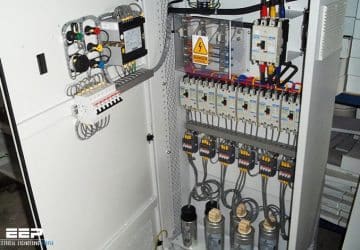Hardware Implementation of Substation Control and Automation
To form a substation control system, the various elements described above must be assembled into some form of topology. Three major hardware topologies can be identified as being commonly used. Let’s get into details of each of hardware topologies: HMI based Topology RTU… Read more
Oct 28, 2015 | By Edvard Csanyi

Balancing of single-phase loads to achieve energy efficiency
All single-phase loads, especially those with non-linear characteristics, in an electrical installation with a three-phase supply should be evenly and reasonably distributed among the phases. Such provisions are required to be demonstrated in the design for all three-phase 4-wire circuits… Read more
Oct 24, 2015 | By Edvard Csanyi

6 Voltages a Person Can Be Exposed To In a Substation
Figures 1 and 2 show the voltages a person can be exposed to in a substation. There are many definitions related to these voltages, but the following six are the most important. These definitions are: Ground potential rise (GPR) Mesh… Read more
Oct 09, 2015 | By Edvard Csanyi

The Basics Of Distribution Substations For Electrical Engineers (Beginners)
Distribution substations serve a wide range of private and public customers in distributing electric power. They can be shareholder, cooperatively, privately, and government owned. All substations contain power transformers and the voltage-regulating apparatus required for converting the high incoming sub-transmission… Read more
Oct 07, 2015 | By Edvard Csanyi

Substation AC Auxiliary Supply For Inessential Loads
The purpose of auxiliary power supply systems is to cater for the necessary energy for the operation of primary and secondary devices at the substation. The auxiliary power systems are normally divided in two categories, namely the AC system and… Read more
Sep 30, 2015 | By Edvard Csanyi

Substation DC Auxiliary Supply – Battery And Charger Applications
A power substation can have one or several DC systems. Factors affecting the number of systems are the need for more than one voltage level and the need for duplicating systems. Today, normal DC auxiliary supply systems in power substations are… Read more
Sep 21, 2015 | By Edvard Csanyi

SF6 or Vacuum MV Circuit Breaker In Specific Switching Applications
Many years of experience in developing both SF6 and vacuum medium-voltage circuit breakers has yielded up ample evidence that neither of the two technologies is generally better than the other, and especially that they are complementary from the application point… Read more
Sep 14, 2015 | By Edvard Csanyi

6 Customer Requirements For a Generator Regarding Power Demand
To select an on-site engine/generator sets (gensets), you’ll need to determine the power demand requirements which must be met under operating conditions, of course. Let’s talk about six recognized customer genset requirements regarding power demand // On Site Power Requirement Load… Read more
Sep 12, 2015 | By Edvard Csanyi

Differences in size and weight of equipment using copper and aluminium conductors
It is a common misconception that electrical equipment built using aluminum conductors will always be larger than the same equipment using copper conductors. While the actual conductor within the equipment will be larger with aluminum, many times the enclosure for… Read more
Jul 13, 2015 | By Edvard Csanyi

Medium Voltage Earthing Systems – Arrangements and Comparison
First, let’s define the different medium voltage earthing systems and then compare the advantages and disadvantages of each one. Earthing systems in medium voltage can be differentiated according to the neutral point connection method. The various earthing systems in medium… Read more
Jul 03, 2015 | By Edvard Csanyi

Basic Stand-Alone Application of Reclosers
Reclosers are self-contained fault interrupting and reclosing devices, specifically designed for overcurrent protection in secondary distribution systems. Reclosers are situated in selected locations within the overhead distribution network. With the correct protection setting and MV fuse selection coordination, concerning the… Read more
Apr 15, 2015 | By Edvard Csanyi

Configurations and characteristics of distribution substations
Distribution substations come in many sizes and configurations. A small rural substation may have a nominal rating of 5 MVA while an urban station may be over 200 MVA. Figures 1 through 3 show examples of small, medium, and large… Read more
Apr 13, 2015 | By Edvard Csanyi

Important primary distribution (radial and loop) system considerations
The primary distribution system is that part of the electric distribution system between the distribution substation and distribution transformers. It is made up of circuits called primary feeders or distribution feeders. These feeders include the primary feeder main or main… Read more
Apr 06, 2015 | By Edvard Csanyi

6 Transformer Types You Can See In Commercial Installations
Transformers in commercial installations are normally used to change a voltage level from a utility distribution voltage to a voltage that is usable within the building, and are also used to reduce building distribution voltage to a level that can… Read more
Mar 16, 2015 | By Edvard Csanyi

How can I select the right capacitors for my specific application needs?
Once you’ve decided that your facility can benefit from power factor correction, you’ll need to choose the optimum type, size, and number of capacitors for your plant. There are two basic types of capacitor installations: individual capacitors on linear or… Read more
Feb 13, 2015 | By Edvard Csanyi


